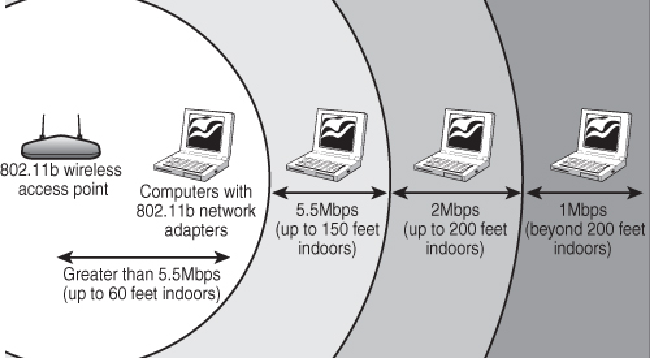Hardware Reference
In-Depth Information
IEEE 802.11a
The second flavor of Wi-Fi is the wireless network known officially as IEEE 802.11a.
802.11a (also referred to as Wireless-A) uses the 5GHz frequency band, which allows for
much higher speeds (up to 54Mbps) and helps avoid interference from devices that cause
interference with lower-frequency 802.11b networks. Although real-world 802.11a hard-
wareseldom,ifever,reaches thatspeed(almost fivetimes thatof802.11b),802.11arelat-
ively maintains its speeds at both short and long distances.
For example, in a typical office floor layout, the real-world throughput (always slower
than the rated speed due to security and signaling overhead) of a typical 802.11b device
at 100 feet might drop to about 5Mbps, whereas a typical 802.11a device at the same dis-
tance could have a throughput of around 15Mbps. At a distance of about 50 feet, 802.11a
real-world throughput can be four times faster than 802.11b. 802.11a has a shorter max-
imum distance than 802.11b (approximately 75 feet indoors), but you get your data much
more quickly.
Given the difference in throughput (especially at long distances), and if we take the ex-
istence of 802.11g out of the equation for a moment, why not skip 802.11b altogether?
In a single word:
frequency
. By using the 5GHz frequency instead of the 2.4GHz fre-
quency used by 802.11b/g, standard 802.11a hardware cuts itself off from the already vast
802.11b/g universe, including the growing number of public and semipublic 802.11b/g
wireless Internet connections (called
hot spots
) showing up in cafes, airports, hotels, and
business campuses.

